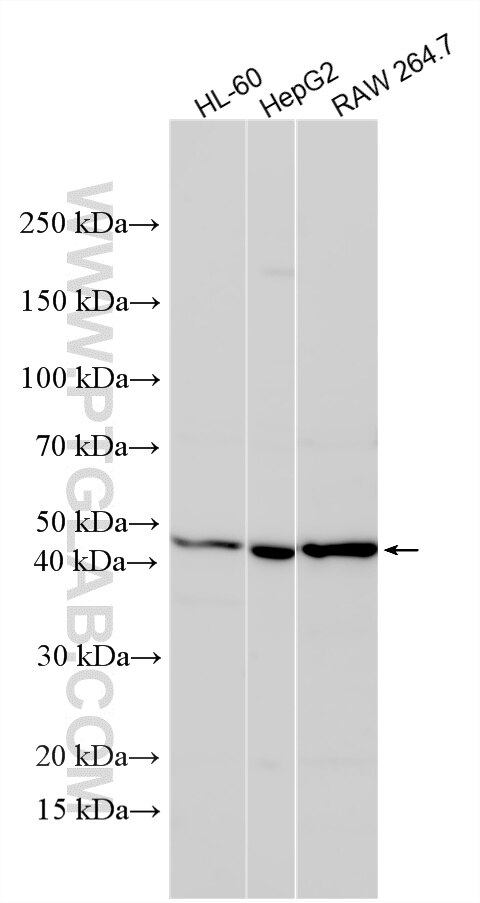Anticorps Polyclonal de lapin anti-ERCC8
ERCC8 Polyclonal Antibody for WB, ELISA
Hôte / Isotype
Lapin / IgG
Réactivité testée
Humain, souris
Applications
WB, ELISA
Conjugaison
Non conjugué
N° de cat : 15921-1-AP
Synonymes
Galerie de données de validation
Applications testées
| Résultats positifs en WB | cellules HL-60, cellules HepG2, cellules RAW 264.7 |
Dilution recommandée
| Application | Dilution |
|---|---|
| Western Blot (WB) | WB : 1:500-1:1000 |
| It is recommended that this reagent should be titrated in each testing system to obtain optimal results. | |
| Sample-dependent, check data in validation data gallery | |
Informations sur le produit
15921-1-AP cible ERCC8 dans les applications de WB, ELISA et montre une réactivité avec des échantillons Humain, souris
| Réactivité | Humain, souris |
| Hôte / Isotype | Lapin / IgG |
| Clonalité | Polyclonal |
| Type | Anticorps |
| Immunogène | ERCC8 Protéine recombinante Ag8734 |
| Nom complet | excision repair cross-complementing rodent repair deficiency, complementation group 8 |
| Masse moléculaire calculée | 396 aa, 44 kDa |
| Poids moléculaire observé | 42 kDa |
| Numéro d’acquisition GenBank | BC009793 |
| Symbole du gène | ERCC8 |
| Identification du gène (NCBI) | 1161 |
| Conjugaison | Non conjugué |
| Forme | Liquide |
| Méthode de purification | Purification par affinité contre l'antigène |
| Tampon de stockage | PBS with 0.02% sodium azide and 50% glycerol |
| Conditions de stockage | Stocker à -20°C. Stable pendant un an après l'expédition. L'aliquotage n'est pas nécessaire pour le stockage à -20oC Les 20ul contiennent 0,1% de BSA. |
Informations générales
ERCC8 (also known as Cockayne Syndrome A protein, CSA) is a critical nuclear protein that serves as a specific adapter component of the CRL4ᴱᴿᶜᶜ⁸ ubiquitin ligase complex. Its primary function is to play a central role in the transcription-coupled nucleotide excision repair pathway, specifically recognizing and repairing the template strands of actively transcribed genes damaged by factors such as ultraviolet radiation. Mutations in the ERCC8 gene cause Cockayne syndrome, an autosomal recessive disorder characterized by severe photosensitivity, premature aging, neurodevelopmental abnormalities, and sensorineural hearing loss. This demonstrates that ERCC8 is essential for maintaining transcriptional fidelity, neuronal survival, and combating oxidative stress. Therefore, ERCC8 is not only a key factor in DNA repair but also an important molecule for studying mechanisms of premature aging and neurobiology.
Protocole
| Product Specific Protocols | |
|---|---|
| WB protocol for ERCC8 antibody 15921-1-AP | Download protocol |
| Standard Protocols | |
|---|---|
| Click here to view our Standard Protocols |


